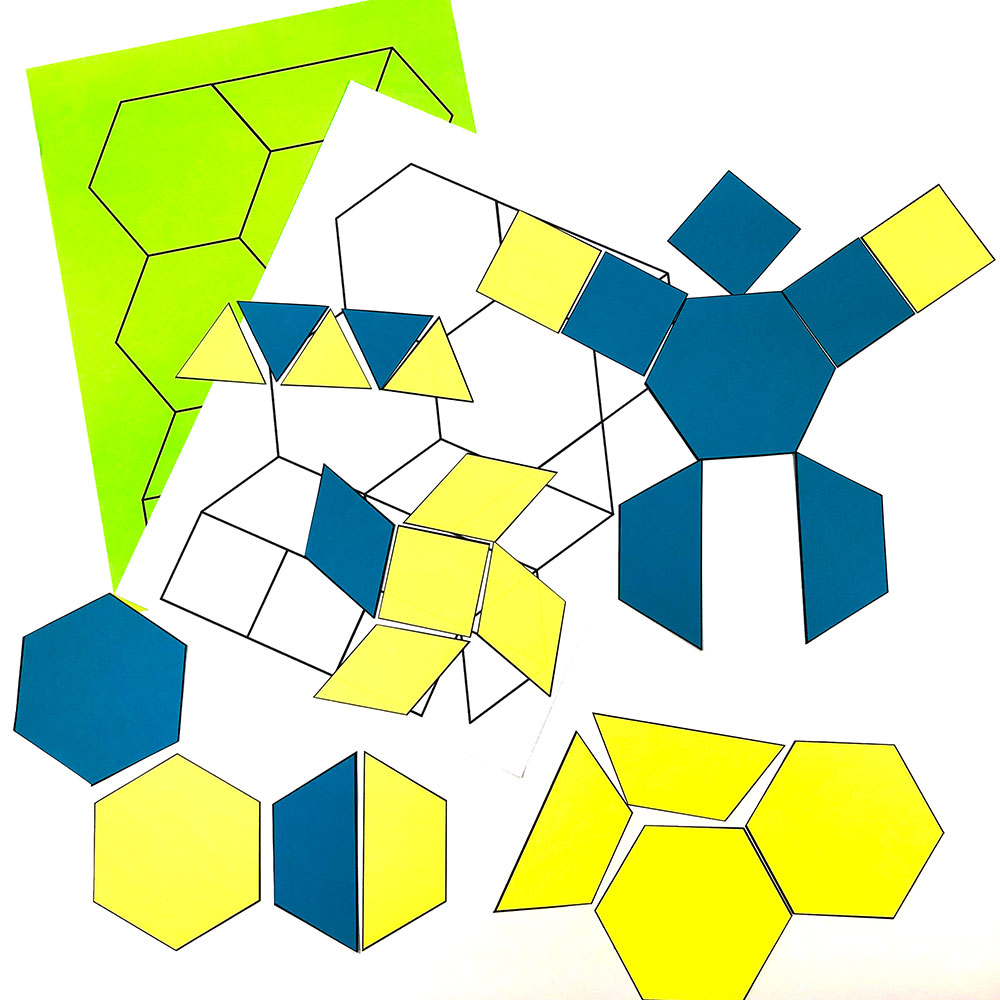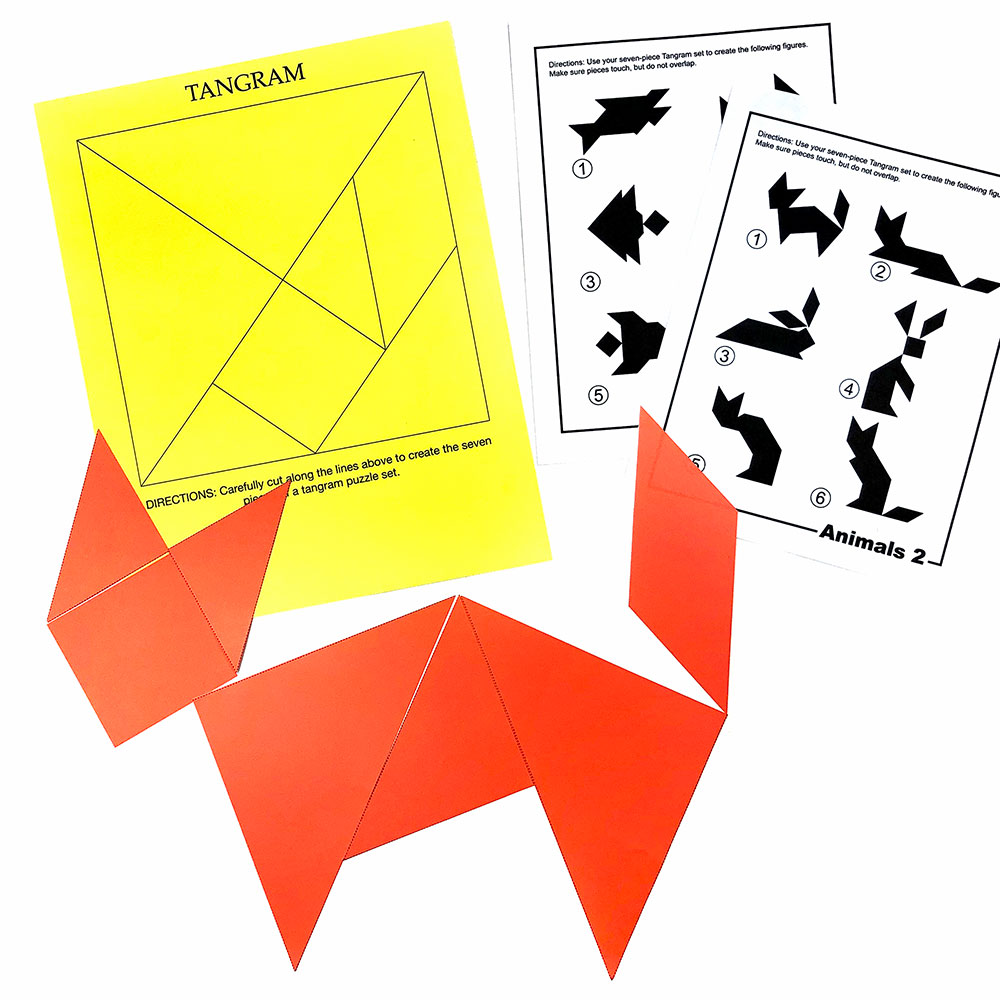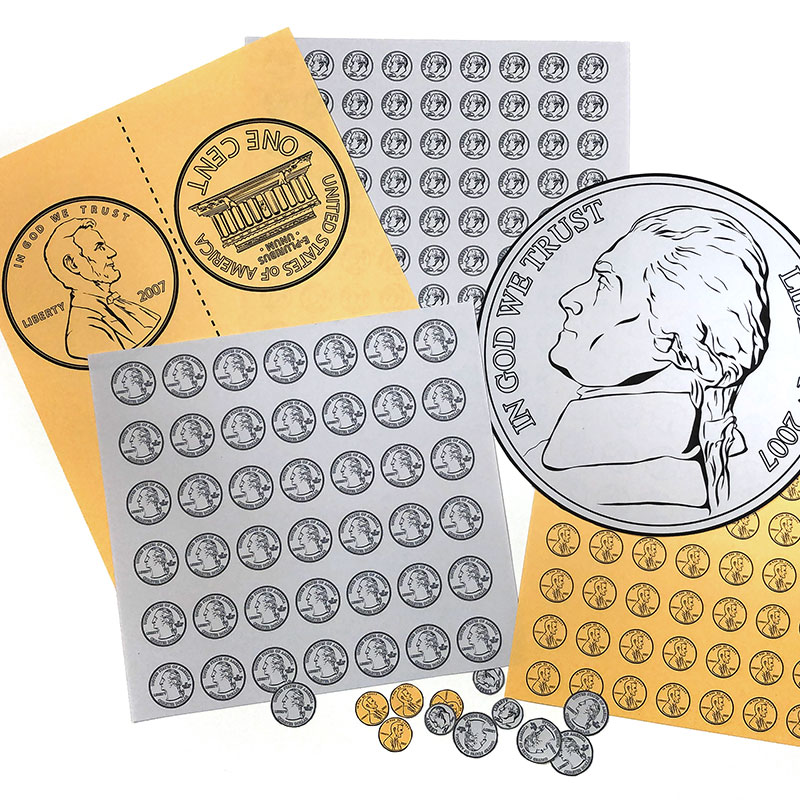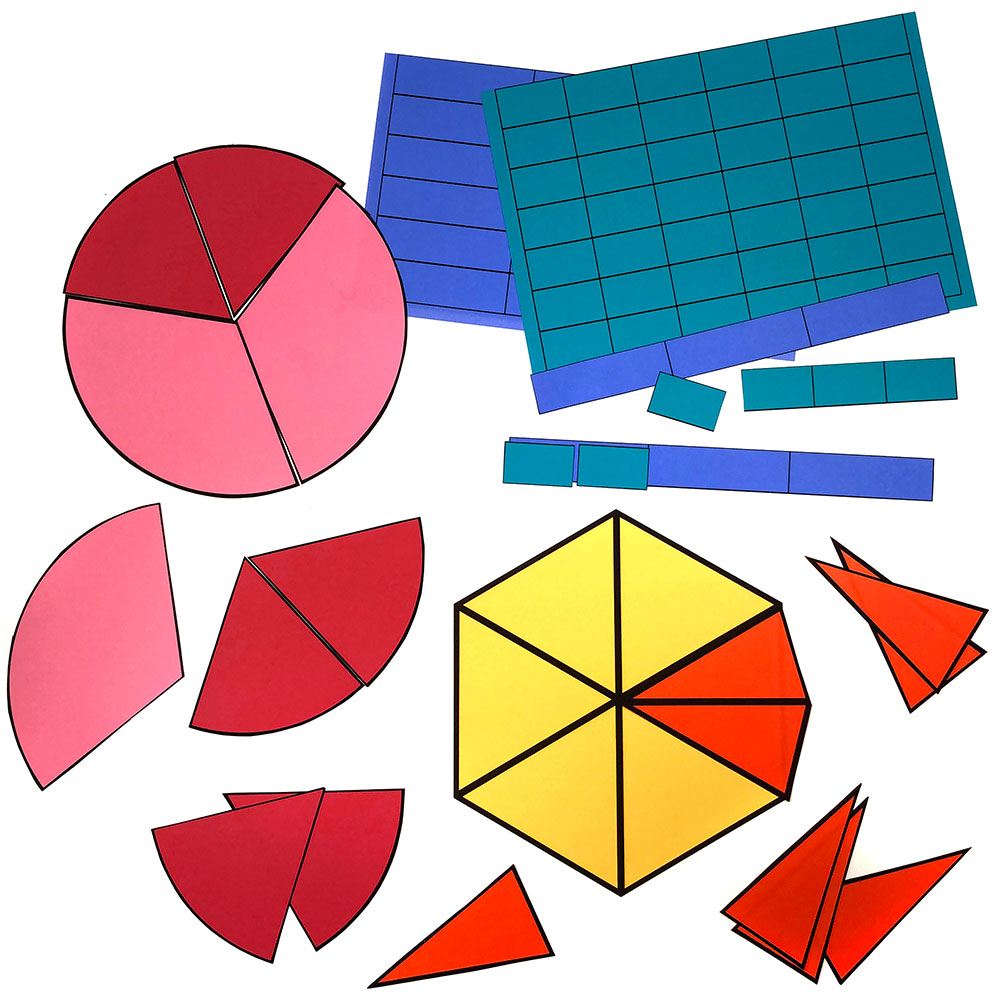
The ClipArt ETC website includes nearly 10,000 Mathematics images. Here you can find everything from kindergarten counting posters to high school trig illustrations. Within the collection, you can find many items that can be printed out and used as manipulatives with students. Depending on the type of manipulative you are making, you may wish to print on colored paper or cover stock, or laminate some of the items. You may even want to add magnetic strips to the back of some items to use on a metallic whiteboard. The inexpensive paper sets can also be sent home with students. Here are just four categories within the Math section that can get you started with paper manipulatives.

Pattern Blocks
The pattern blocks section provides 22 illustrations of geometric pattern blocks that can be used to solve problems, build patterns, visualize fractions, and to make tessellations. For more ideas, see our Working with Pattern Blocks PDF for teachers.

Tangrams
The tangrams section includes patterns for cutting tangram sets, figures for students to reproduce with their tangram sets, and solution sheets. For more ideas, see our Working with Tangrams PDF for teachers.

Currency
The U.S. Currency section includes nearly 400 images of pennies, nickels, dimes, quarters, half-dollars, and dollar coins of various sizes and arrangements. You can find small coins arranged in arrays that can be printed and cut out. There are also large examples that can be arranged for whole-class activities or used on bulletin boards.

Fraction Pies, Polygons, and Strips
The fractions section includes fraction pies from halves to twelfths, faction polygons, and fraction strips.
You’ll find plenty of other sections in the Mathematics ClipArt gallery that can also be used as manipulatives including blank clocks, dominoes, geometric shapes, coordinate grids, graphs, geoboards, number lines, spinners, and thermometers.
Roy Winkelman is a 40+ year veteran teacher of students from every level kindergarten through graduate school. As the former Director of FCIT, he began the Center's focus on providing students with rich content collections from which to build their understanding. When not glued to his keyboard, Dr. Winkelman can usually be found puttering around his tomato garden in Pittsburgh. Questions about this post or suggestions for a future topic? Email me at winkelma@usf.edu. To ensure that your email is not blocked, please do not change the subject line. Thank you!
FCIT Newsletter
Each month FCIT publishes a newsletter with short articles on teaching and learning with technology, using digital content in the classroom, and technology integration. Subscribe today! The subscription form will open in a new window. When you have subscribed, you can close the new window to return to this page.
